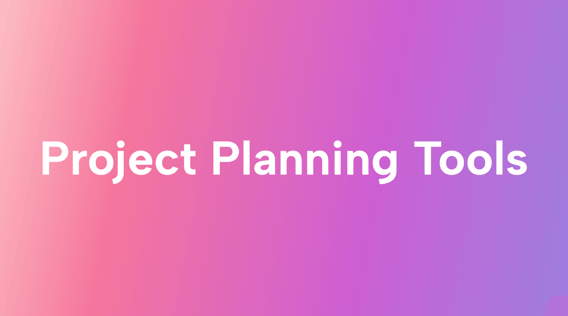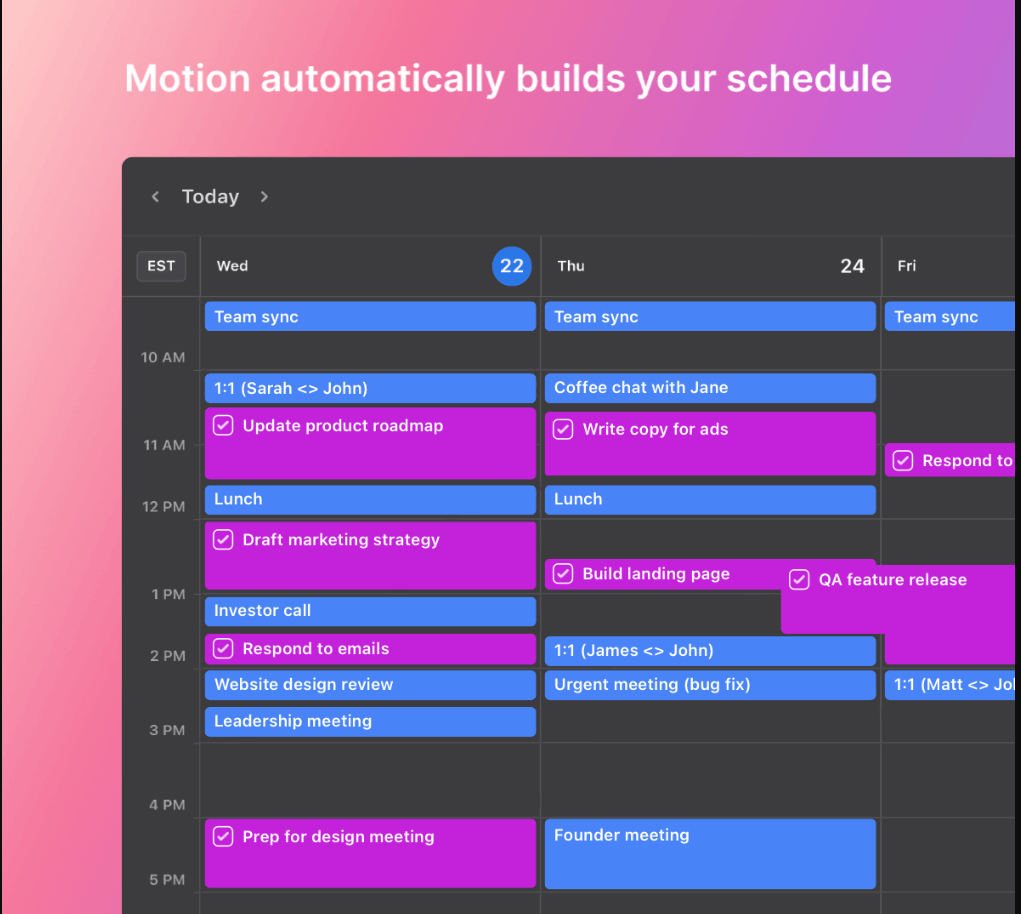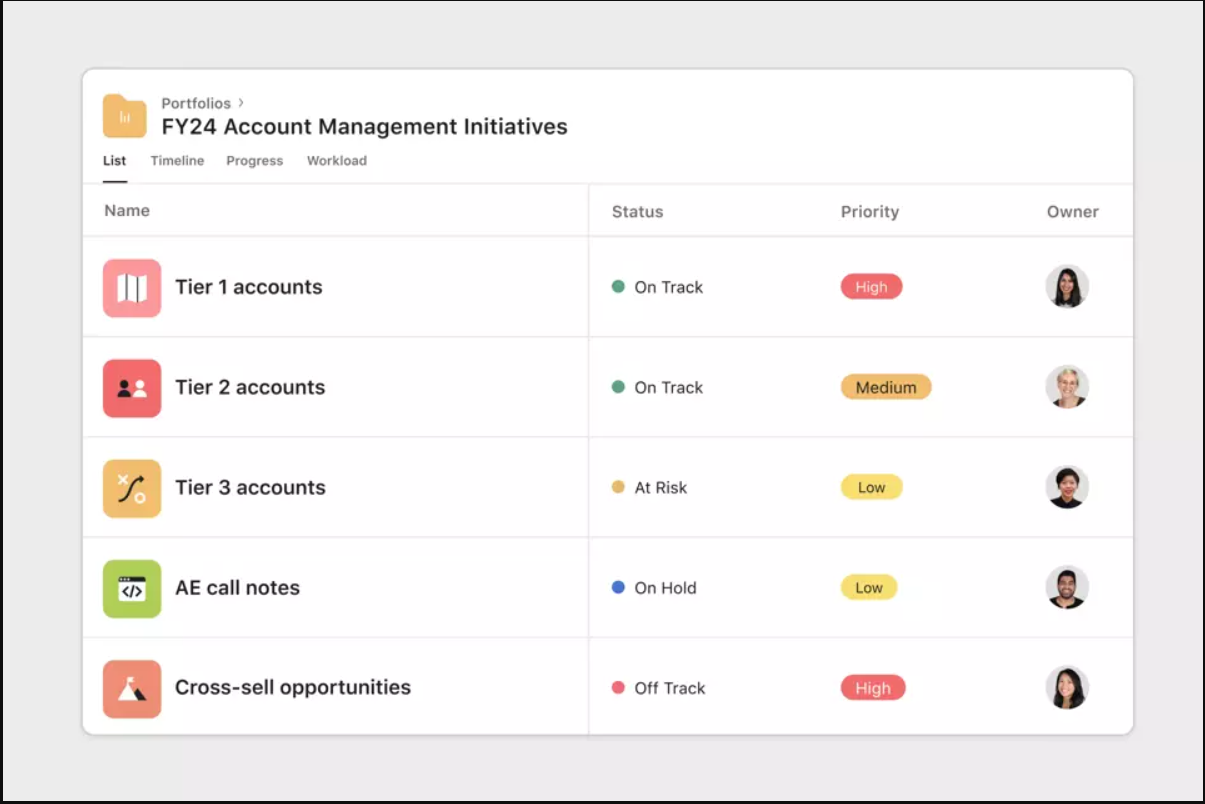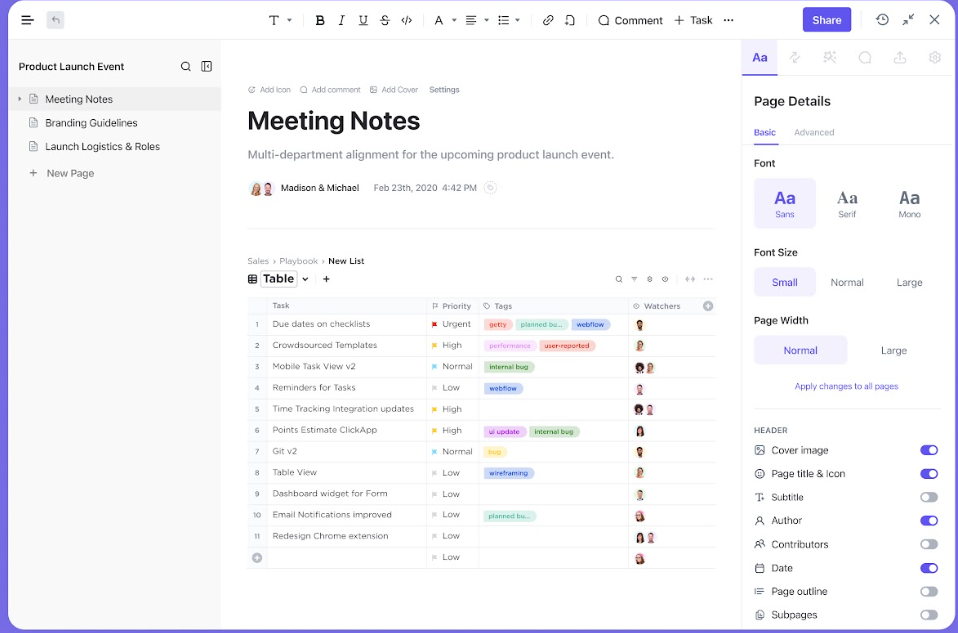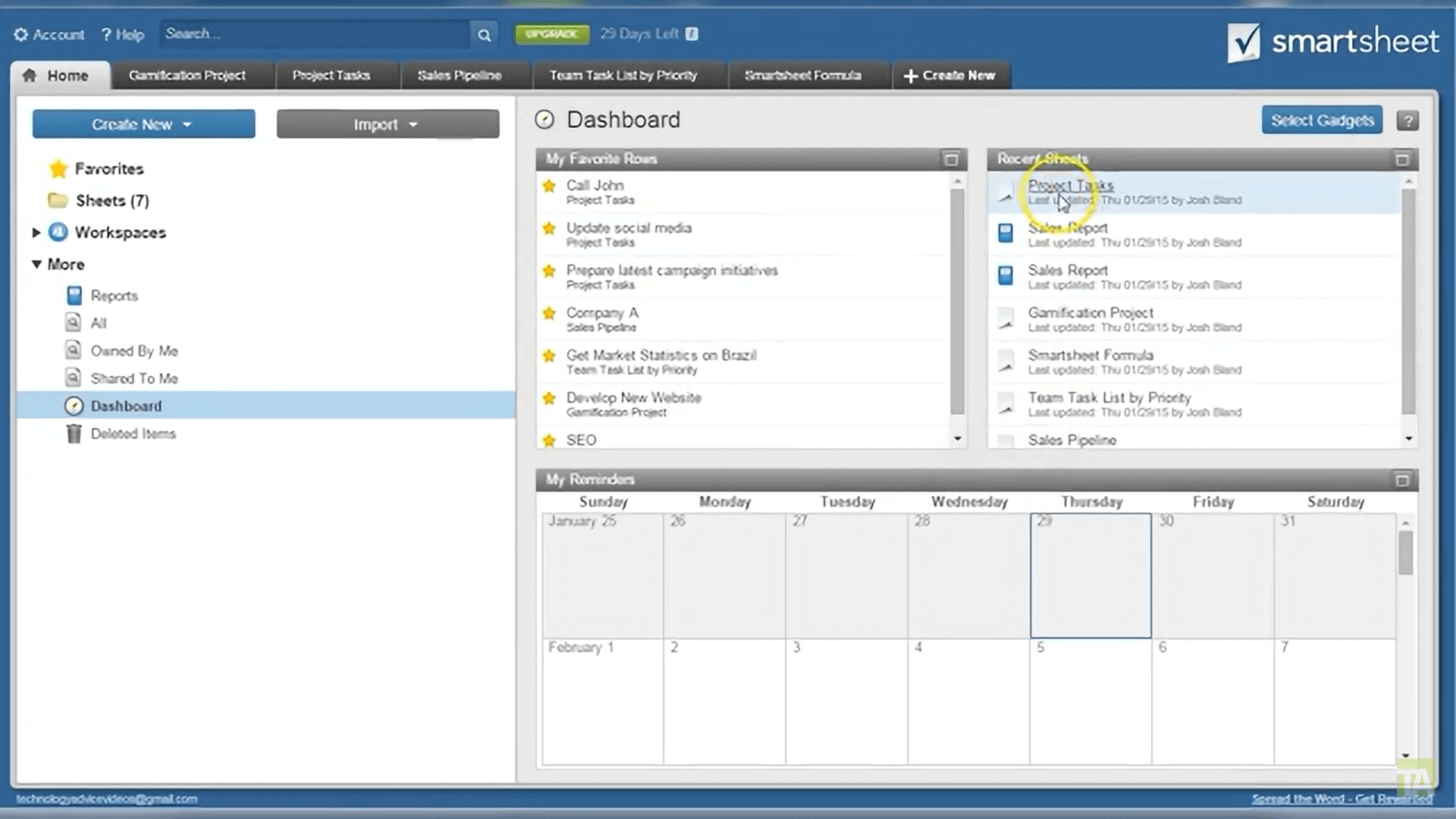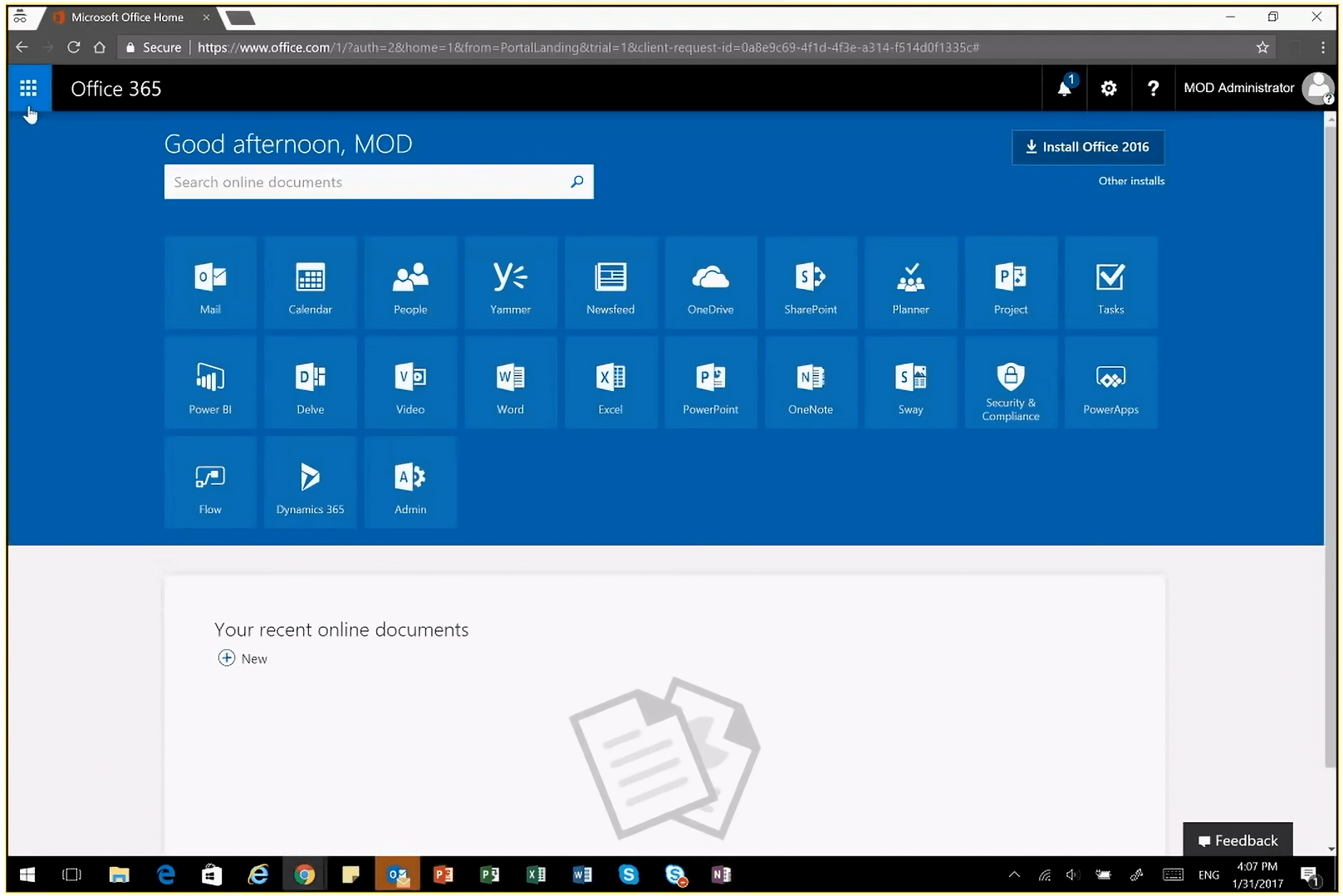Plans can be tricky endeavors, which rarely survive contact with the real world.
Despite that truism, properly planning is as important as ever as ⅔ of project managers say projects are only getting more difficult.
Luckily, project planning tools can take a lot of the burden off your shoulders and simplify the whole planning process.
In this article, we’ll examine some of the best planning tools available (which offer a range of features and benefits). One of them might be just the tool you need to help plan your next project.
What’s project planning?
Project planning provides a method of meeting your project goals with the time and resources available. There are several approaches to project planning which have emerged from different project management methodologies.
Let’s dive into the top three.
Waterfall
The Waterfall method is used when a defined plan is needed upfront. Projects then proceed through the planned phases (and the work for the phase is completed) before moving on to the next planned phase. Think of construction projects, where the work has to happen in a set sequence (e.g., the foundation comes before the framework).
Waterfall project planning usually follows a sequential approach that goes something like this:
- Identify desired outcomes and major deliverables
- Define scope of the project
- Pinpoint the stakeholders
- Gather requirements
- Create a work breakdown structure
- Allocate resources and budget
- Implement solutions (while monitoring and controlling throughout the project)
- Perform quality management throughout the project
- Perform risk management throughout the project
These activities are carried out in defined phases: Requirements, Design, Implement, Test, Deploy, and Maintain.
Common project management tools used in waterfall include the critical path method, PERT, and the work breakdown structure (WBS).
While its use isn’t limited to Waterfall project management, the PMI Project Management Body of Knowledge (PMBoK) is a comprehensive guide to this methodology (more recent editions of PMBoK also include Agile).
Agile
Instead of creating a complete, phased project plan, Agile methods follow 12 key principles to deliver projects iteratively. The idea behind iterating (v. following strict sequential steps), is that one can adapt to changing circumstances and requirements “on the fly”. This approach is well-suited for projects where requirements can evolve as you go, like website design or software development.
Examples of Agile frameworks include Scrum, Kanban, Lean, and extreme project management.
Popular Agile tools and ceremonies for planning include;
- Kanban boards and sprint boards help to visualize work in progress (and dependencies)
- Sprint planning is a form of Agile planning for 1–4 week-long iterations of development
- Daily stand-up meetings are held with the project team daily to check in on the work being done
- Instead of requirements, user stories define the value for the customers (and the work to be done)
- Sprint backlogs are used to prioritize and keep track of tasks
Agile has its roots in software development, as this is a highly evolving environment where requirements can change often. It has also become popular as a project management method and is applied in construction, health, marketing, and in start-up enterprise environments as well.
Agile has become a popular project management methodology across industries. In fact, more than half of industry-leading companies use Agile tools and techniques.
Hybrid
Hybrid project management methodologies combine principles from both Waterfall and Agile.
For example, Disciplined Agile Delivery (DAD) uses the structured starting and closing processes from the Waterfall method, along with the iterative processes from Agile to do or build.
It's also possible to use pieces from Agile, like the daily stand-up or retrospective, within the structured phases of Waterfall.
What to look for in a project planning tool
Your project planning needs will likely vary, depending on the type of project and what you’re trying to accomplish. However, there are a few key features that your project management tools should include:
- Task management: Features that help break a project down into manageable parts, including task lists, task dependencies, and task tracking.
- Resource management : Functionality focused on human resources, including assigning tasks, and tracking workloads.
- Collaboration Tools: The ability to discuss and comment, as well as centralized documentation and document sharing, within the tool.
- Scheduling : Define and track due dates and project timelines.
- Reporting and analytics : Features that help track progress and issue tracking against key performance indicators.
- Integration capabilities : the capability to connect with other applications.
Project planning tools continue to evolve and offer new features. For example, artificial intelligence has been a game-changer with functionality like Motion’s Intelligent Calendar, which can automatically manage your critical tasks (and time).
6 best project planning tools
Each application on this list is among the best project planning tools on the market. We selected them for their ease of use and focus on features (including integrations and AI).
Let’s go.
1: Motion
Motion is an intelligent AI project management tool that can help with a wide variety of project planning activities. Take, for example, its blockers feature, where you can assign task dependencies found during planning. Motion will make sure they’re worked in the correct order (even when you rearrange them).
Key Features
- Motion has a Kanban board with easy-to-use drag-and-drop functionality
- Alerts for project deadlines, task updates, and milestones
- Alerts when team members are over-scheduled
- Automate task scheduling, planning, and management
- A variety of different views to organize your schedule and individual tasks
- AI schedules meetings according to your preferences (and team availability)
- Popular native integrations to Google Calendar, MS products, and more
- Public API to create your own integrations
Pricing plans
Motion offers one pricing plan for individuals and one for team use. Both options can be paid for annually (upfront), or monthly for a bit more. Either way, you can start with a 7-day free trial.
Individual
- Billed annually - $19/month or $228/year
- Billed monthly - $34/month or $408/year
Team
- Billed annually - $12/month per user
- Billed monthly - $20/month per user
2: Asana
Asana is a popular project management platform used for planning that's gone through several iterations over the years. Asana’s most recent version offers visual tools such as a Kanban board, timeline, and Gantt chart which are all great for project planning.
Key Features
- Kanban boards for tracking tasks
- AI-assisted scheduling calendar
- Automate repetitive tasks
- Gantt chart and workflow builder help with project planning
- Track team workloads
- Templates for many common tasks
- Large library of integrations
Pricing plans
Asana has three payment tiers:
- Free - $0. The free tier offers bare-bones functionality, but it allows for unlimited projects, tasks, and messages
- Premium - $10.99/user per month billed annually. $13.49/user per month billed monthly. Access more core features like the Gantt chart and workflow builder
- Business - $24.99/user per month billed annually. $30.49/user per month billed monthly. The business tier adds features like workload monitoring and project portfolios
3: ClickUp
ClickUp is a collaborative project management tool with a variety of planning features. For basic project planning and management, ClickUp is simple to use, with tools like Kanban boards, timeline views, and Gantt charts.
Key Features
- Collaborate easily within the application
- Create tasks that can be tracked, commented on, and customized
- Track metrics
- Long list of integrations
- Easy to use interface
- Customizable dashboards and views
Pricing plans
There are four standard pricing plans for ClickUp:
- Free - $0. Unlimited users and tasks, but other features are limited.
- Unlimited - $5/user per month billed annually. $9/user per month billed monthly. The lowest-paid tier introduces integrations and custom fields. Unlimited users.
- Business - $12/user per month billed annually. $19/user per month billed monthly. Business adds advanced features to core functions like workflow automation and tracking.
- Business Plus - $19/user per month billed annually. $29/user per month billed monthly. Customization of permissions and roles is available, and one gets more workflow automation.
4: monday.com
monday.com offers a high-level view of projects, making it a good tool for project planning. One of its most polished features is its Gantt chart, which can be customized to display a simple to high-level overview of all work to be done.
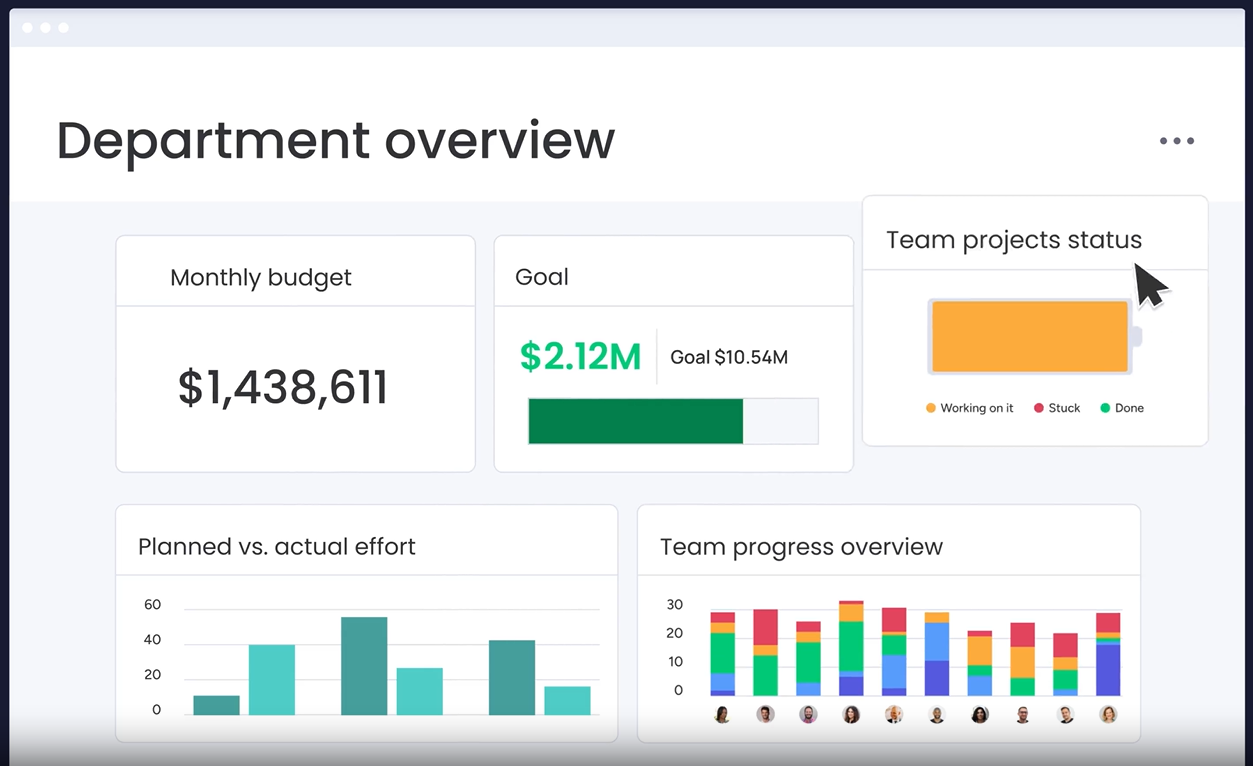 |
Key Features
- Customize views and dashboards
- Easy to build custom workflows and automation
- Tools for project portfolio management
- Library of integrations, including with Motion
- Easily add other services like Miro and EasyForm
Pricing plans
monday.com offers five tiers of features and services:
- Free - $0. Limited to two users. Unlimited tasks and templates, though advanced features are limited
- Basic - $8/user per month, billed annually. $10/user per month, billed monthly. Access to core features like a customizable Dashboard and improved support. Unlimited users and unlimited projects
- Standard - $8/user per month, billed annually. $10/user per month, billed monthly. Adds Timeline and Gantt views. Also adds limited automation
- Pro - $16/user per month, billed annually. $20/user per month, billed monthly. Adds advanced features like time tracking. Also ups the number of automation and API calls
5: Smartsheet
Smartsheet is similar to a basic spreadsheet (easy to adopt for those accustomed to Excel) but with advanced planning features. It can automate repetitive tasks and track work in progress or work to be done, and it’s easy to set up since they have quite a few templates available.
Key Features
- Spreadsheet templates for different needs
- WorkApps allow you to create custom business apps
- Automate repetitive tasks
- Easily track metrics and progress
- Easy to create custom workflows and workflow automation
- Share sheets with the team
Pricing plans
Pricing tiers are as follows:
- Free - $0. Limited to 2 editors and 2 sheets
- Pro - $7/user per month, billed annually. $9/user per month, billed monthly. 10 editors and unlimited sheets. Unlimited projects. A limited number of automation per month and support limited to email
- Business - $25/user per month, billed annually. $32/user per month, billed monthly. Unlimited users and more advanced features like activity log and document builder
6: MS Project
MS Project is the classic project management app that remains a powerful tool for large, more complex projects. In addition to project planning and task management, MS Project provides a wide range of admin tools and add-ons (MS Office suite).
Key Features
- Both cloud-based and on-premises options
- Robust implementation support
- Portfolio project management
- Project templates to simplify organization
- A full suite of task planning and management functionality
- Integrates with other Microsoft products
- Large community of experienced users
Pricing plans
MS Project is the most expensive of the options, and it offers two different ways to buy.
Cloud-based:
- Project plan 1 - $10/user per month. Includes core features, but doesn’t have access to resource management, enterprise resource planning, and a few other features.
- Project plan 3 - $30/user per month. Adds most of the features plan 1 lacks, though limits desktop clients.
- Project plan 5 - $55/user per month. Includes all the features available to MS Project.
On-premises (Limit 1 person and PC per license):
- Project standard 2021 - $679.99. Offers basic features, focusing on task management.
- Project professional 2021 - $1,129.99. Offers most features, except for some proposal management tools.
- Project server - Price varies. This solution scales to your needs.
More choices to consider
Although they didn’t make the top six, here are three more solid choices to consider when looking for a project planning tool:
- Trello - An Atlassian product, Trello uses a Kanban board for project planning and management, similar to other options like Motion and ClickUp.
- Wrike - Wrike offers many tools you’d find on other platforms, like Gantt charts and a Kanban board. Add-on services include improved security and data analysis.
- Planview - Planview is a good alternative to MS Project for large businesses. In addition to project planning and management features, it provides portfolio functionality for handling multiple projects.
Plan your projects for success with Motion
Project planning can be a complicated and difficult affair. But with the right planning tools, you can make your life much easier.
With Motion, you can plan projects using one of its many tools. With its Kanban board, you can plan out the tasks for a project. And its robust AI functions can then assign those tasks to team members automatically.
Sign up for your 7-day free trial today.

